AI image generators have been brewing (generating?) up a storm for the last couple of years. If you’ve been on social media, watched prime time news shows, or read a magazine, AI-generated images have been impossible to miss. They’re everywhere, and it’s easy to see why: the tools necessary to make them are now good—and available to the public. If you want to join in the fun, or add some AI-powered features to your business workflows, the apps on this list will give you what you’re looking for.
I’ve been writing about AI image generators since Google Deep Dream in 2015. That’s about as long as anyone outside of a computer science lab has realistically been thinking about these tools, and I’m really excited by how far they’ve come.
I’m going to try to avoid the thorny discussions around artistic merit, whether or not these tools are replacing or augmenting artists, and copyright infringement in training data, at least where I can. Instead, I’ll focus on the fact that these AI image generators can now produce fascinating results from a wide range of text prompts.
It’s worth taking a few hours to play around with one of these text-to-image AI apps—even just so you can appreciate them from a technical perspective. Whether you like it or not, we’re all seeing a lot of their output at the moment. And there will only be more to come.
The best AI image generators
How do AI image generators work?
All these AI image generators take a text prompt and then turn it—as best they can—into a matching image. This opens up some wild possibilities, since your prompt can be anything from “an impressionist oil painting of a Canadian man riding a moose through a forest of maple trees” to “a painting in the style of Vermeer of a large fluffy Irish wolfhound enjoying a pint of beer in a traditional pub” or “a photograph of a donkey on the moon.”
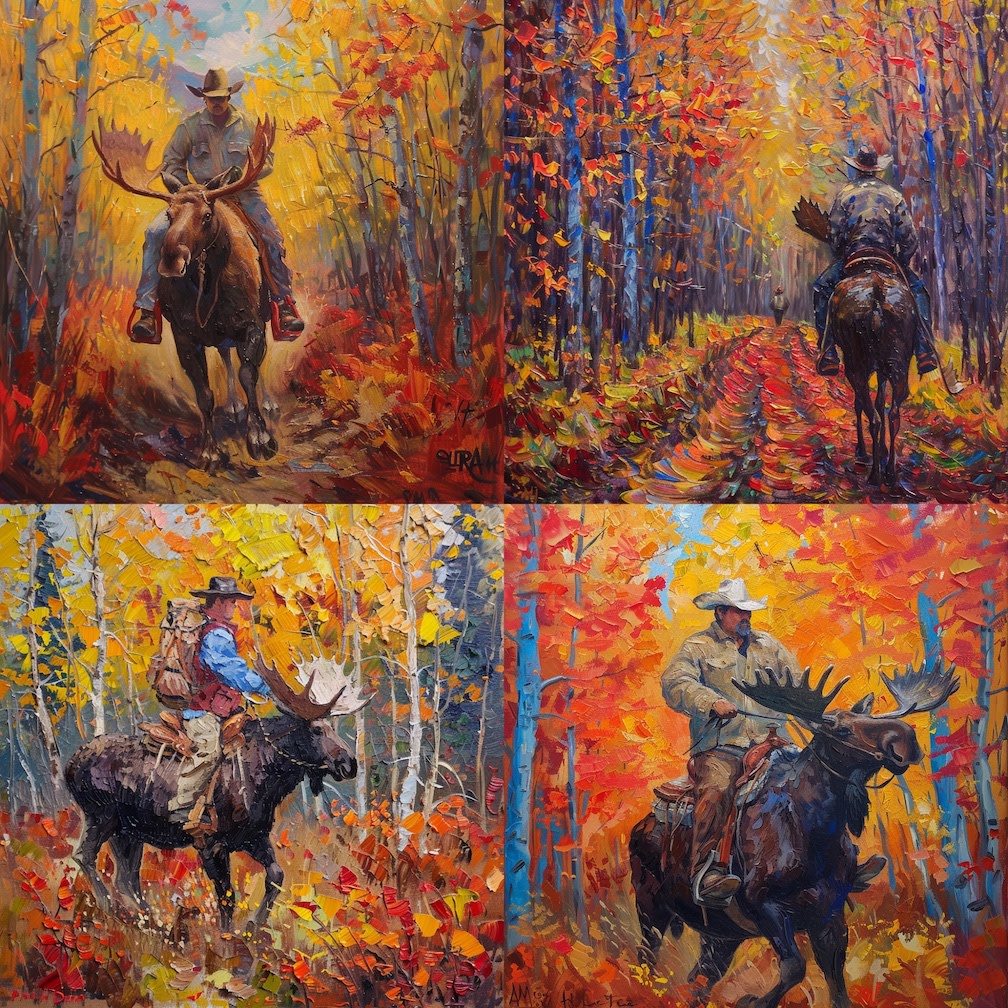
Seriously, the only real limits are your imagination, the AI image generator’s ability to comprehend your prompt, and any content filters put in place to stop plagiarism, copyright infringement, and bad actors flooding the internet with AI-generated violence or other NSFW content. (That Vermeer prompt used to work reliably, but some image generators now block it because it uses a named artist.)
Most AI image generators work in a pretty similar way. Millions or billions of image-text pairs are used to train a neural network (basically, a very fancy computer algorithm modeled loosely on the human brain) on what things are. By allowing it to process near-countless images, it learns what dogs, the color red, Vermeers, and everything else are. Once this is done, you have an AI that can interpret almost any prompt—though there is a skill in setting things up so it can do so accurately.
The next step is to actually render the AI-generated image. The latest generation of AI image generators do that using a process called diffusion. In essence, they start with a random field of noise and then edit it in a series of steps to match their interpretation of the prompt. It’s kind of like looking up at a cloudy sky, finding a cloud that looks kind of like a dog, and then being able to snap your fingers to keep making it more and more dog-like.
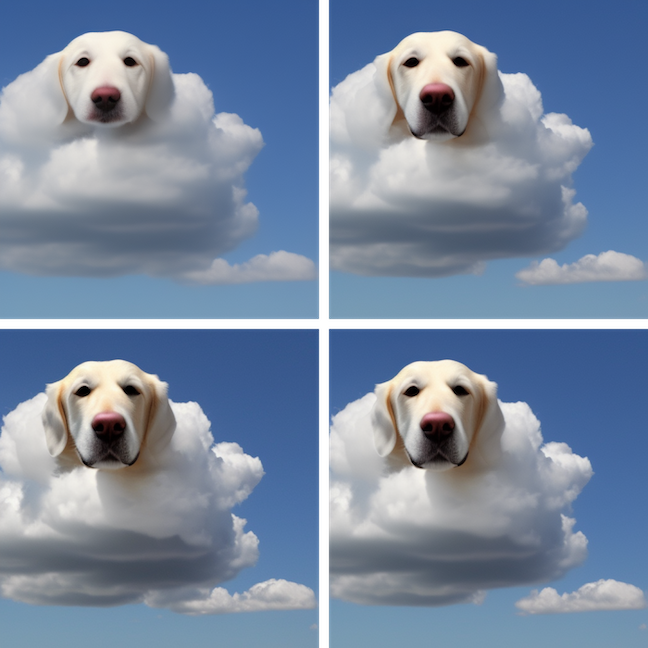
Before we dive in: I don’t want to oversell things. What these text-to-image generators can do is very impressive, but they aren’t likely to save you from ever having to do a product photoshoot again. If you just need some weird or unique images, they can really help. But if you’re looking for something super specific, you’re better off hiring a photographer—or licensing the exact image you want. Similarly, trying to use one to make a header image for a blog post can take a lot more time than just finding a header image for your blog through a stock photo site. Sure, it won’t be as custom, but the model is more likely to have ten fingers.
What makes the best AI image generator?
How we evaluate and test apps
Our best apps roundups are written by humans who’ve spent much of their careers using, testing, and writing about software. Unless explicitly stated, we spend dozens of hours researching and testing apps, using each app as it’s intended to be used and evaluating it against the criteria we set for the category. We’re never paid for placement in our articles from any app or for links to any site—we value the trust readers put in us to offer authentic evaluations of the categories and apps we review. For more details on our process, read the full rundown of how we select apps to feature on the Zapier blog.
There’s a reason that AI image generators have become incredibly popular over the past two years: before that, they were pretty bad. The technology underlying them was incredibly cool and impressive, at least to research scientists, but the images they could output were underwhelming. Even the original DALL·E was more of a fun novelty than a world-shaking revelation when it launched in 2021.
Now that these text-to-image generators have been around for a while, we’re starting to see some real competition between different models. The results they produce are also a lot more realistic. So, to find the best AI art generators, I set some pretty strict criteria:
-
I was looking for apps that allowed you to generate AI images from a text prompt. Tools that have you upload a dozen of your photos and then spit out AI-generated portraits are fun (and normally built using Stable Diffusion), but they aren’t the kind of general-purpose image generators I was considering.
-
I was looking at the AI image generators themselves, not tools built on top of them. For example, NightCafe is an AI picture generator that has a great community and app, but it just enables you to use open source models like FLUX and Stable Diffusion, fine-tuned models based on various versions of them, the DALL·E 3 API, as well as a handful of older generative models. It’s worth checking out, but it doesn’t meet my criteria for its own entry on this list.
Aside from all that, I also considered how easy each AI image creator is to use, what kinds of controls and customization options it provides (for things like AI image upscale), what pricing model it has, and most important of all: how good were the results? The best AI image generators are now far less likely to create weird or impossible-looking things.
I’ve been using and writing about text-to image generators since the original DALL·E launched, and about photography and art for more than a decade, so I’m pretty familiar with how all these tools work—and their various pros, cons, and bonkers behaviors. But writing this article was actually the first time I’ve put so many AI image generators head-to-head with the same prompts. The results were fascinating, and I’m delighted to say all the apps on the list offer genuine reasons to use them.
Before we dive in, one more thing to note: a lot of these tools are technically in beta, and I suspect they’ll remain that way for a while. While they’re getting more and more impressive every day, AI image generators have a long way to go before they’re able to consistently produce great results and reliably fit into commercial workflows.
Unfortunately, being in beta doesn’t mean these tools are free. It’s understandable, given the heavy computing load involved in creating AI images, but it still means that they’re harder to just play around with.
How to use AI image generation at work
Interested in AI, but not quite sure how you’d use it at work? Here are a few of the ways people are turning to AI image generation in their roles:
-
Generating hero images for blog posts
-
Creating social media posts
-
Generating slide decks and storyboards
-
Creating personalized images for customers
Learn more about how to use AI image generation at work.
The best AI image generators at a glance
|
Best for |
Access options |
Price |
Parent company |
|
|---|---|---|---|---|
|
Ease of use |
ChatGPT Plus or Enterprise; Bing’s AI Copilot; API |
2 free images/day with a free ChatGPT plan; included with ChatGPT Plus at $20/month |
OpenAI |
|
|
High-quality results |
Discord, web app |
From $10/month for ~200 images/month and commercial usage rights |
Midjourney |
|
|
Accurate text |
Web app |
Limited free plan; from $8/month for full-resolution download and 400 monthly priority credits |
Ideogram AI |
|
|
Customization and control |
NightCafe, Tensor.Art, Civitai, and lots of other apps; API; downloading it to a local server |
Depends on the platform |
Stability AI |
|
|
Stable Diffusion alternative |
NightCafe, Tensor.Art, Civitai, and lots of other apps; API; downloading it to a local server |
Depends on the platform |
Black Forest Labs |
|
|
Integrating AI-generated images into photos |
firefly.adobe.com, Photoshop, Express, and other Adobe tools |
Free for 25 credits/month; from $4.99 for 100 credits/month |
Adobe |
|
|
Commercially safe images |
iStock |
From $14.99 for 100 AI generations |
Getty (uses NVIDIA Picasso) |
The best AI image generator for ease of use
DALL·E 3

DALL·E 3 pros:
DALL·E 3 cons:
DALL·E 3 is arguably the biggest name in AI image generators—and with good reason. Its predecessor, DALL·E 2, was the first AI-powered image generator that was good enough to create wildly interesting images and was widely available to enough people to go viral.
DALL·E 3 is a significant improvement over DALL·E 2. For any given prompt, it produces more interesting, more realistic, and more consistent results. Previously, it felt like OpenAI was falling behind its competitors with AI image generators, but DALL·E 3 brought it right back into the race. You can access it through ChatGPT and Microsoft Bing’s AI Copilot, as well as a few other services that use its API.
The biggest thing is that DALL·E 3 is ridiculously simple to use. Tell ChatGPT or Bing what you want to see, and within a few moments, you’ll have two to four AI-generated variations to choose from. It uses GPT-4o’s understanding of language to expand your prompts, so each result will be distinct, and you can always ask for more.
OpenAI lets free ChatGPT users create two images a day with DALL·E 3, while Microsoft gives you much more flexibility without paying. I found Copilot a bit more awkward to use, but it’s hard to argue with the price. But the best way to use DALL·E 3 is with ChatGPT Plus, where you can use it as much as you like, subject to other messaging limits.
DALL·E 3 has two ways to edit your images: you can ask ChatGPT to make changes, and it will rerun the prompts with your additions; or you can use a select tool to limit the updates to specific parts of the image. (You can’t expand a DALL·E-generated image yet, at least not without taking things to another app.) Sometimes this feels like magic, where ChatGPT will do exactly what you request. Other times, it’s like working with an overeager intern who’s a touch too happy to do their own thing. If you want more control, you can try one of the other apps on this list.
In addition to DALL·E 3 through ChatGPT, OpenAI offers an API, which allows developers to build apps that integrate with the two DALL·E models. Because of that, you can connect DALL·E to Zapier to do things like automatically create images from Google Forms or HubSpot responses—or any other apps you use. Learn how to automatically create logos or generate blog images with DALL·E and Zapier, or get started with these pre-made workflows.
Zapier is a no-code automation tool that lets you connect your apps into automated workflows, so that every person and every business can move forward at growth speed. Learn more about how it works.
DALL·E pricing: DALL·E 3 is included as part of ChatGPT Plus at $20/month and available for free through Microsoft Copilot; API pricing is more complex, but starts from $0.016/image.
Google’s Gemini chatbot can now generate images using the Imagen 2 text-to-image model. It’s good, but in my testing, I preferred the results I got from DALL·E 3. Still, if you use Gemini, it’s worth checking out. For more details, see Zapier’s showdown of ChatGPT vs. Gemini.
The AI image generator with the best results
Midjourney

Midjourney pros:
Midjourney cons:
Midjourney consistently produces my favorite results of all of the image generators on this list. The images it creates seem more coherent, with better textures and colors—and overall, the results are just more interesting and visually appealing. In particular, people and real-world objects look more lifelike and natural than they do with other AI image generators, at least without lots of prompting, and the latest versions can even get hands kind-of right. It’s telling that it was the first AI image generator to win an art competition.
Best of all, Midjourney now has an actual web app. You no longer have to access it through Discord—though you can if you want. Some of its most advanced features—like blending multiple images, preserving details across different generations, and matching styles— haven’t made the jump to the web app yet, but you can still use its great editor and have a lot of control over how things look.
Still, as you can probably guess, Midjourney isn’t totally free of quirks: by default, every image you generate is posted publicly on Midjourney’s Explore page and can be viewed on your profile. It gives everything a cool community aspect, but it means that anyone who cares to look can see what you’re creating. While not necessarily a problem for artists, this might be a dealbreaker if you’re looking to use Midjourney for business purposes.
If things still sound a bit confusing, don’t worry. Midjourney’s help docs are really good and walk you through getting started with both the web app and Discord, and they show you how to control all its various features, from selecting model versions and upscaling to using character references and its personalization tools. Once you understand the different options, the results you can get are genuinely amazing.
Midjourney’s free trials are currently suspended because of the overwhelming number of people trying to use it, but they’re occasionally reinstated for a few days. If you miss a free trial window, the Basic Plan starts at $10/month and comes with 3.3 hours of GPU time per month, or around 200 images. You also get the option to buy additional GPU time, and you can use your images commercially.
Midjourney pricing: From $10/month for the Basic Plan that allows you to generate ~200 images/month and provides commercial usage rights.
Best AI image generator for accurate text
Ideogram

Ideogram pros:
Ideogram cons:
Most AI image generators struggle to create text correctly—the diffusion process just doesn’t lend itself to rendering letters. Ideogram, though, has cracked the process. Its latest 2.0 algorithm is able to accurately include text along with any generated image.
What makes this more impressive is Ideogram is also one of the best image generators overall. It has an intuitive web app and some nice features like an image editor and the ability to use any image as the basis for a new one. In my testing, the only app I consistently liked more was Midjourney—and it’s still a little hamstrung by its previous reliance on Discord.
Ideogram even has a free plan. With it, you’re limited to 10 credits a day, you have to wait a few minutes for a generation to start, and you only get Ideogram’s basic features, but it’s still a great way to get a feel for one of the best AI image generators available.
Ideogram pricing: Limited free plan; from $8/month for full-resolution download and 400 monthly priority credits.
Best AI image generator for customization and control
Stable Diffusion
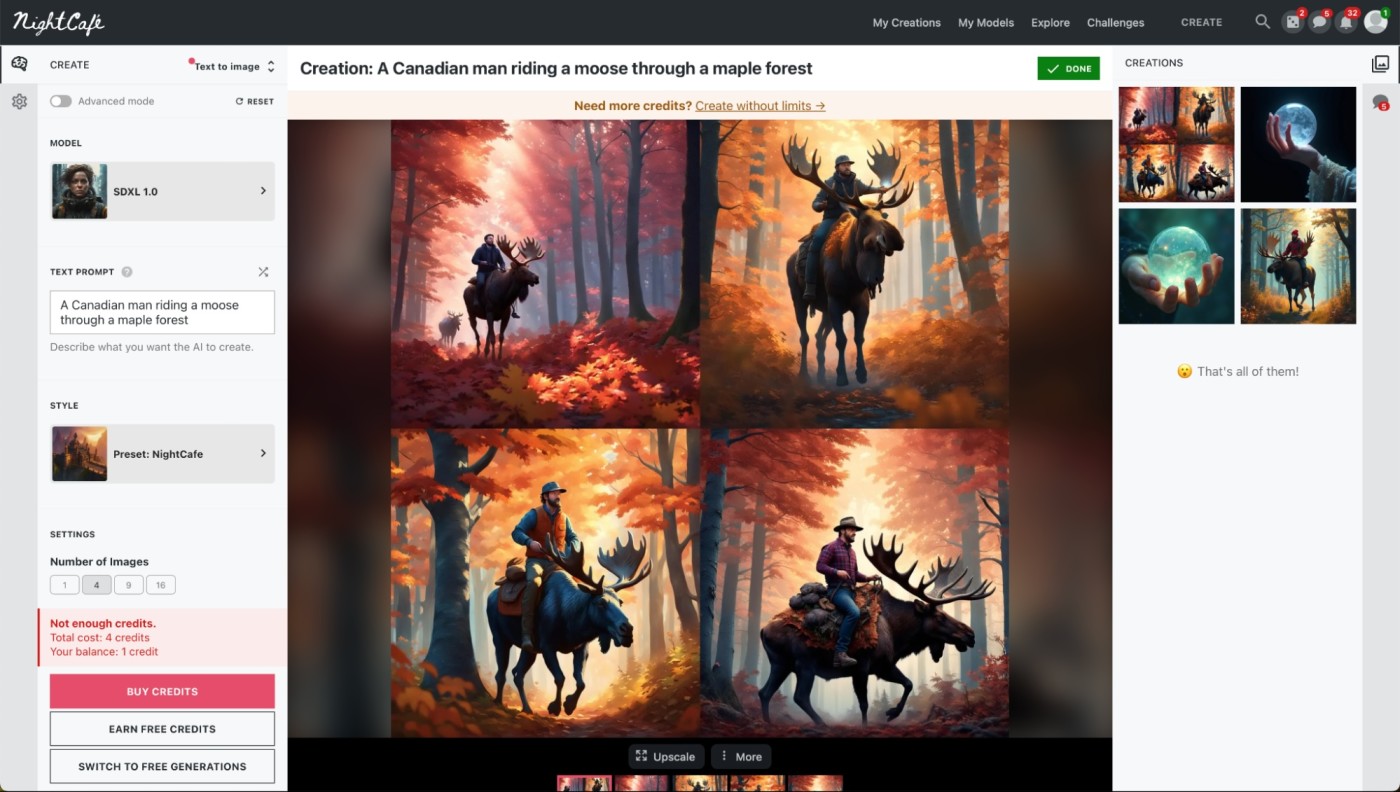
Stable Diffusion pros:
-
Widely available across AI art generator platforms
-
Affordable, customizable, and super powerful with generally great results
Stable Diffusion cons:
Unlike DALL·E and Midjourney, Stable Diffusion is open source. This means anyone with the requisite technical skills can download it and run it locally on their own computer. It also means that you can train and fine-tune the model for specific purposes. For the past couple of years, almost all the services that use AI to generate artistic portraits, historical portraits, architectural renders, and everything else use Stable Diffusion this way.
But open source can also mean chaos. And that’s exactly what’s happened with Stability.ai, the company that was formed by some of the researchers who developed Stable Diffusion. It’s currently on the verge of collapse, its latest model and licensing terms have been heavily criticized, and most of the research team has left to form a new company (which I’ll talk about next).
All this puts Stable Diffusion in a weird place. The existing versions are still some of the best models available, there are countless fine-tuned versions that make it even better for specific uses, and it’s wildly popular—but I’m not sure for how much longer any of this will remain true.
The best (or at least most stable) way to use Stable Diffusion is through an image generation tool like NightCafe, Tensor.Art, or Civitai—though you can find lots of other apps that will give you access to it. A lot of these platforms even give you a few free credits so you can try it out before paying. One word of warning, though: some of these platforms don’t have the kind of content moderation that’s typical on larger social sites. You might see some weird and NSFW things.
If you want to avoid all that or have total control, you can always download Stable Diffusion and run it locally.
Stable Diffusion pricing: Depends on the platform, but many offer free credits so you can try them out.
Best Stable Diffusion alternative
FLUX.1
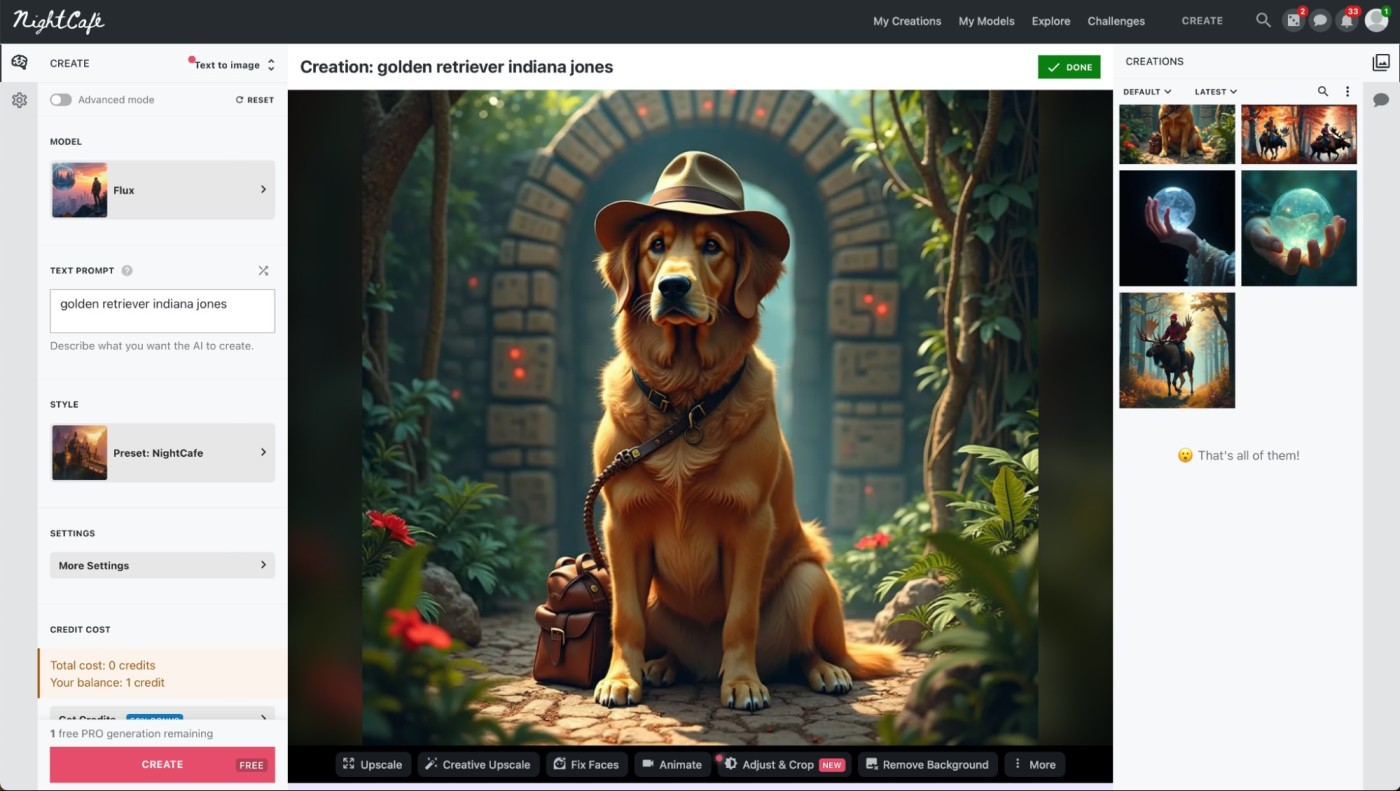
FLUX.1 pros:
FLUX.1 cons:
As Stability.ai started collapsing, a significant portion of the team left the company to found Black Forest Labs. Now, they’ve released their first series of text-to-image models: FLUX.1.
In my testing, FLUX.1 is at least as good as Stable Diffusion. While it’s not as widely supported yet, I suspect it will gradually take over as more AI artists fine-tune it to create niche models.
Right now, if you’re looking to get into open AI image generation rather than just using one of the simpler text-to-image tools, I’d suggest experimenting with FLUX.1 over Stable Diffusion. FLUX.1 Schnell is released under an open Apache 2.0 license, while the larger FLUX.1 is open for non-commercial use.
Like Stable Diffusion, the simplest way to use FLUX.1 is through online AI art generators like NightCafe, Tensor.Art, and Civitai. Sign up for a free account, give it a go, and compare it side by side with some of the other models. But again, be warned that the content on these sites may not be entirely SFW.
FLUX.1 pricing: Depends on the platform, but many offer free credits so you can try them out.
Best AI image generator for integrating AI-generated images into photos
Adobe Firefly
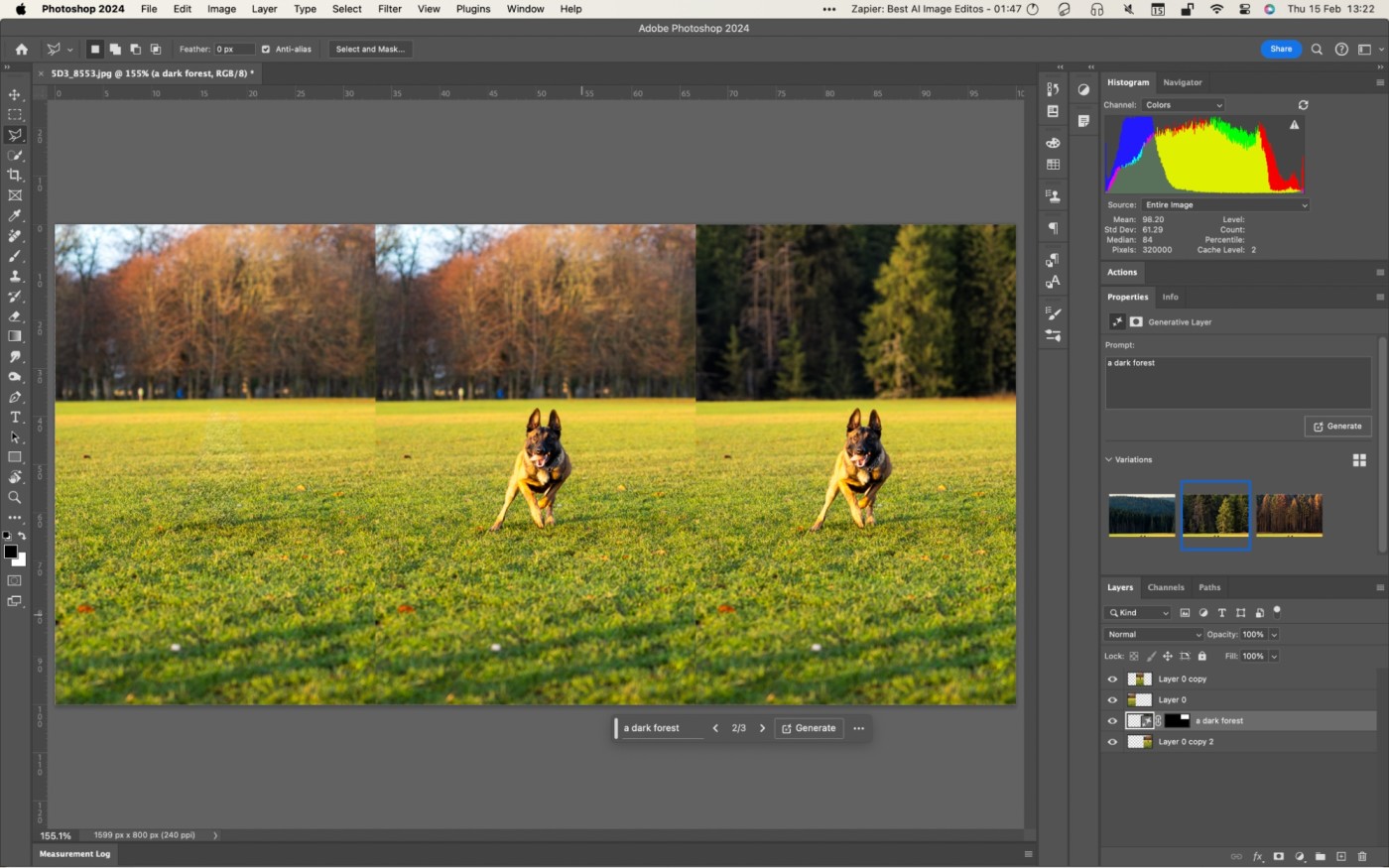
Adobe Firefly pros:
-
Integrates well with Adobe’s apps, especially Photoshop
-
Powerful when it’s matching an image
Adobe Firefly cons:
Adobe has been building AI tools into its apps for more than 15 years, so it should be no surprise that it has one of the most powerful text-to-image generators—at least in terms of how it integrates with other tools. You can try its AI model, Firefly, out on the web for free or through Adobe Express, but it’s at its best in the latest version of Photoshop.
Firefly has a few tricks up its sleeve. In addition to being capable of generating new images from a detailed text description, it can create text effects from a written prompt (think, the word “TOAST” written with letters that look like they’re made from toast), recolor vector artwork, or add AI-generated elements to your images. You can test all these out through the web app, but it’s that last feature where Firefly stands out.
Taken purely as a text-to-image generator, Firefly’s results can be pretty hit and miss. It can match or beat DALL·E or Midjourney for some prompts, but for others, I question what it was aiming to do. On the other hand, its integration with Photoshop, the industry standard image editor, is next level.
The two best features are Generative Fill and Generative Expand. With Generative Fill, you use Photoshop’s regular tools to select an area of your image, and then, just by clicking a button and typing a prompt, you can replace it with something else. With Generative Expand, you can add to the outside of your image. Crucially, both tools understand the context of your image. In the screenshot above, you can see that Photoshop has matched the depth-of-field blur for the forest I added using Generative Fill. It looks cohesive.
As much as DALL·E and Stable Diffusion have started the conversation about image-generating AIs, Adobe’s Firefly is the first implementation of an AI photo generator that really hints at what’s to come. It isn’t a party trick, but a tool that’s available to the millions of professionals who use Adobe apps every day.
Firefly pricing: Free for 25 credits/month; from $4.99 for 100 credits/month; Photoshop is available from $19.99/month as part of the Creative Cloud Photography Plan, which comes with 500 generative credits.
Best AI image generator for usable, commercially safe images
Generative AI by Getty Images

Getty pros:
Getty cons:
-
Less creative and fun to use
-
Can’t compete with Midjourney, DALL·E 3, or Stable Diffusion in terms of overall quality
As we’ve discussed, AI image generators are… controversial. Even aside from the ethics of using them, the legal situation is incredibly murky. The U.S. Copyright Office has generally ruled that AI images can’t be copyrighted, so your competitors could conceivably take your images and use them without repercussions. Honestly, if you run a business, just avoiding generative AIs is an understandable strategy. But if you really want to use them, then a platform like Getty Images that promises its Generative AI image generator is free from these sorts of headaches is the best option.
Generative AI by Getty Images, which you can easily access via iStock, is surprisingly good—especially at creating stock-like photos. I tested it with classics like “woman laughing alone with salad,” and the results were pretty solid. At a glance, the best options were indistinguishable from real stock photos.
For more creative prompts, like “a Canadian man riding a moose through a maple forest,” and anything involving specific art styles, it was a bit rougher, to put it lightly. I suspect this is down to the training data. Instead of a questionably-sourced collection of a few billion images, Generative AI uses NVIDIA Picasso and was largely trained on Getty’s stock image catalog. According to Getty, this was all done above board, and it has a program in place to compensate artists whose work was used to train the model.
While that’s laudable, it does affect the kind of things you can generate. Generative AI won’t create anything featuring a real person, a trademark, or anything else that potentially violates intellectual property laws. I couldn’t even get it to generate a painting in the style of Vermeer, despite the fact he died in 1675. Overall, it makes Getty’s tool less fun and flexible to use—but much more practical for companies with a legal department.
Generative AI by Getty pricing: Available as Generative AI by iStock for $14.99 for 100 AI generations
Stock image site Shutterstock also has an AI image generator that it built with OpenAI. I tested it out and didn’t like it as much, but it’s worth checking out if you need commercially safe images.
How to use an AI image generator
Ok, so you know what the best options are, but…now what? The team at Zapier has put together a bunch of resources to help you understand how to use these tools—and put them to work.
First, tutorials and walkthroughs for some of the best AI image generators on this list:
Plus, a guide for how to write effective AI art prompts, so you can get what you’re looking for faster (and better) when generating images.
Once you’ve got the basics down, it’s time to use these tools for more than just creating wacky pictures. Here are some tips for how to use AI image generators at work:
And finally, a few ways that you can automate your AI image generators, so they do their magic behind the scenes and connect to all the other apps you use.
What about Google Gemini and Imagen?
The most notable absence on this list is Google’s Imagen text-to-image generator. You can use Imagen 2 through Google Gemini right now, but it’s not as good as DALL·E 3 or any of the other apps on this list. Imagen 3 just debuted, and you can try it yourself through the AI Test Kitchen. It’s a big improvement over Imagen 2, and when it rolls out more widely, it will almost certainly make the list.
If you want a laundry list of every AI image generator out there, including those that are built on top of these three models, I made that too. It includes more than two dozen image generators: some are built into other tools, like AI writing apps, photo editing apps, or stock photo sites; some let you select from multiple models; and each one differs on how it approaches AI image generation. So if none of the apps on this list feel natural to you, check out my list of the top AI art generators, and see if anything stands out.
The legal and ethical implications of AI-generated images
AI-generated images are everywhere now, but that doesn’t mean we shouldn’t be asking questions about how they should (or shouldn’t) be used.
There aren’t clear laws in place surrounding AI-generated images. And that goes for both sides of the coin: the U.S. Copyright Office suggests that AI-generated content isn’t copyright-protected, and there aren’t rules to protect artists whose work was scraped for AI training. (That’s why Firefly was trained on licensed images and public domain content only.)
It’s already led to lawsuits. Stability AI, for example, is facing lawsuits from Getty Images and artists themselves for unauthorized use of their images, and there’s a class action lawsuit against a number of AI picture generators.
You’re not likely to get into trouble for using AI-generated images for a few social media posts or blog hero images, but because there’s no line drawn in the sand yet, it can be risky to develop an entire strategy around AI-generated art.
Then there’s the issue of bias. As of now, AI has a lot of the same biases as humans, and that can lead to everything from the portrayal of stereotypes to harmful content. I experienced this myself with the outputs I got from some of the apps while testing them, though other tools take deliberate steps to add diversity to the images they generate. It’s up to us as humans to avoid it by reviewing AI-generated content for bias and refining our prompts to eliminate that bias as much as possible.
What’s next for AI image generators?
AI image generating is a rapidly evolving space—and more powerful models are available each time I update this article. It’s wild how good text-to-image models like Midjourney, Ideogram, and FLUX.1 are getting at rendering tricky concepts repeatedly. While they’re still a somewhat niche tool now, if they continue getting better at this pace, they could really shake things up.
Related reading:
This article was originally published in March 2023. The most recent update was in September 2024.